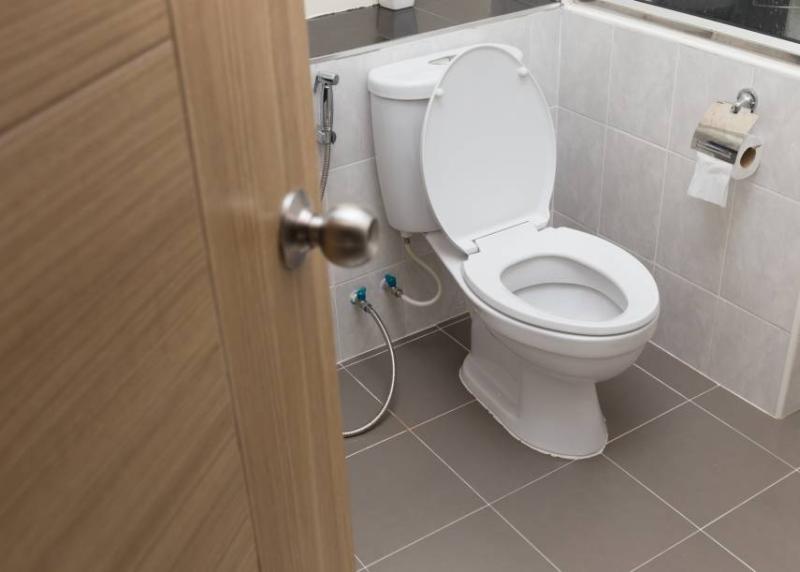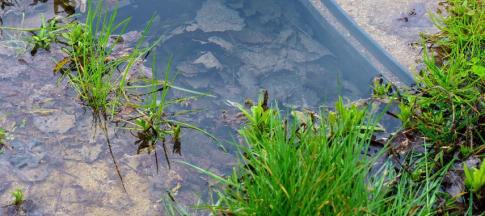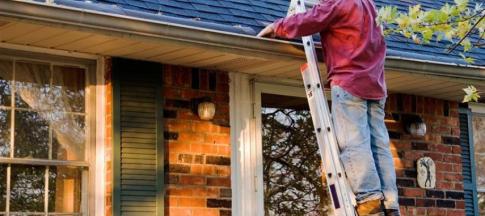
Here’s everything you need to know about clearing a blocked toilet.
Why do toilets get blocked?
The most common reasons why toilets get blocked include:
- excessive toilet paper – toilet paper should break down in water, but if you use too much or use thick, non-disintegrating paper it can block the plumbing
- foreign objects – you should never flush items like wet wipes, cotton balls, dental floss and sanitary towels (also, if you have young children, make sure they don’t flush anything like small toys)
- buildup of limescale – over time, minerals in hard water can accumulate and create deposits in the pipes which can narrow the pipe's diameter and make it easier for blockages to happen
How to prevent toilet blockages
You should avoid putting anything non-flushable in the toilets, like the objects we listed above.
It’s also a good idea to keep the toilet lid closed when not in use. It’s more hygienic and should also prevent objects from falling in, especially if you have shelves above the toilet.
Bleach your toilet regularly to prevent the buildup of dirt and limescale in the pipes.
How to identify the type of blockage
There will probably be signs that your toilet is becoming clogged before it blocks entirely.
The main signs include:
- water draining slowly – if the water takes longer than usual to empty from the bowl, this is a clear sign of a potential blockage
- unusual water level – if the water level rises higher than usual after a flush, this suggests a complete blockage (after this the water might drain slowly or not at all)
- empty toilet bowl after flushing – if the standing water doesn’t return to the bowl, this indicates that air isn’t circulating properly in the waste pipes
Other signs of potential blockage might be gurgling sounds from the toilet or persistent odours even when no-one has used the toilet recently.
How to unblock a toilet with a plunger
Here are the steps to take when using a plunger.
- Lay old towels or newspapers at the base of the toilet, and wear rubber gloves.
- Position the plunger over the drain hole in the bottom of the toilet bowl. Make sure that the rubber cup fully covers the drain opening to create a seal.
- Begin to plunge. Pushing back and forth on the handle will cause the vacuum you’ve created to dislodge whatever’s blocking the pipe. Start with gentle, controlled plunges and gradually increase the force.
- The water should start to drain. If the water level recedes, remove the plunger and flush the toilet to see if it’s worked.
How to unblock a toilet without a plunger
There are a few other methods you can try if you don’t have a plunger. Here are some tips for unblocking a toilet by other methods.
Using hot water
The simplest way to remove partial blockages is with hot water.
- Close the water supply at the valve. This is usually on either side of the cistern or sometimes underneath. This will stop the cistern from refilling, meaning the hot water will travel down the bend.
- If the water level’s not especially low, remove some resting water from the bowl. Dispose of this in an external drain, not down the sink.
- Squirt about half a cup of washing-up liquid into the bowl.
- Leave this for about 10 minutes.
- Pour 2 to 3 litres of hot (but not boiling) water into the bowl. Do this quickly, but be careful not to splash yourself.
- Wait to see if the water level drops. If it doesn’t, repeat the process again if there’s enough room in the bowl.
Remember to turn the water supply back on when you’ve finished.
If this method doesn’t work, you should use a plunger or a toilet auger.
Using toilet auger/plumbing snake
An auger or plumbing snake is a long tool which you can push into the toilet to reach the blockage.
As it’s flexible, it should be able to snake around the pipe’s bends.
The end of the auger should puncture the blockage, or you may be able to extract the blockage using its screw tip.
- Push the auger tip-first into the bowl. Work it down until you can feel the blockage.
- While pushing downwards, rotate the auger using its handle.
- The rotation will hopefully cause the screw-tip to break the blockage into smaller pieces. These can then be flushed. If the tip attaches to the blockage, you can pull it out of the bowl.
- Repeat until the waste outlet is free. If you think you’ve removed the blockage, take the auger out of the bowl and flush to see if it’s worked.
If a solid object stuck in the waste outlet has caused the blockage, the auger may not work.
If so, you may need to remove the toilet bowl to get to the object.
Using baking soda and vinegar
You might be able to unblock the toilet with baking soda and vinegar, which are also good for dissolving limescale. These can be preferable to using harsh chemicals.
Don’t use this method if your toilet’s connected to a septic tank or cesspit.
- Pour half a cup of baking soda into the toilet bowl.
- Heat 2 to 3 litres of water in a saucepan. Before the water reaches boiling temperature, add half a cup of white vinegar.
- Pour the water and vinegar mixture into the toilet bowl and close the lid. The baking soda and hot vinegar should cause a chemical reaction which will foam up and hopefully disintegrate the blockage.
- Wait for 30 minutes, then flush the toilet to see if it’s worked.
When to call a plumber
If these methods don’t work, you might need to call a professional.
If you call a plumber to fix your toilet, use a trusted service like Checkatrade.
Home Emergency cover
Home Emergency or Home Emergency Extra cover will cover a call-out to your home if you have an emergency, like:
- blocked sinks
- a leaking pipe
- faulty toilets and drains
It can be bought as an add-on to your Admiral Home Insurance. Home Emergency cover comes as standard with Gold cover. Home Emergency Extra cover comes as standard with our Platinum cover.
Home Emergency Extra cover
Home Emergency Extra cover comes as standard with our Platinum cover.
If you're a home emergency customer, you can claim by logging in to MyAccount or visiting our make a claim page.
You need to report any incidents within four days of finding them.
The claim limit is up to £500 (Home Emergency cover) or £1,000 (Home Emergency Extra cover) for a temporary repair.
Don't forget, limits and exclusions apply!
Home Emergency cover doesn't cover things like frozen pipes or household appliances, or general household repairs.
Your standard home insurance should cover the cost of fixing any damage the emergency causes. Don't forget that your excess will apply here.
Other plumbing emergencies
If you have other plumbing issues in your home, you may be able to resolve them yourself.
Find out how to unblock your drain or how to unblock your sink.

